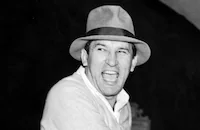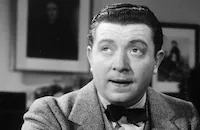Grand Slam

Brief Synopsis
Cast & Crew
William Dieterle
Paul Lukas
Loretta Young
Frank Mchugh
Glenda Farrell
Helen Vinson
Film Details
Technical Specs

Synopsis
Peter Stanislavsky works as a waiter in a Russian restaurant to support himself and his wife Marcia while he writes a serious novel. Although he thinks the game of bridge is supremely silly, Marcia forces him to learn the game. One evening, while he is catering a party of bridge players, the hostess, Lola Starr, drafts the attractive Peter to form a fourth at her table with bridge expert Van Dorn. Peter refuses to bid according to the Van Dorn system and to everyone's surprise wins the match. The next day, Philip, a ghost writer known as Speed, offers to write a book under Peter's name deliniating the Stanislavsky method. To promote the book, Peter and Marcia play in a variety of tournaments. They claim that because there are no rules in the Stanislavsky method, husbands and wives have no reason to fight with each other. In reality, Peter's criticisms of Marcia's bids cause quarrels between the two. Then when Lola asks Peter for private lessons, Marcia is convinced there is something between them, and she leaves Peter. Because he is in love with Marcia, Speed reveals that he wrote the book under Peter's name. Peter's waiter friends are angry because now they will lose the money they invested in the book. In order to pay them back, Peter approaches Van Dorn to propose a contest between the two of them. At the beginning of the contest, Peter is losing badly. Other players refuse to partner with Peter and it looks as though he will have to default until Marcia appears and offers to be his partner. An unbeatable team, they win the match and repair their marriage.

Director

William Dieterle
Cast

Paul Lukas

Loretta Young

Frank Mchugh

Glenda Farrell

Helen Vinson
Roscoe Karns
Ferdinand Gottschalk
Walter Byron

Joseph Cawthorn
Paul Porcasi
Mary Doran
Lucien Prival
Tom Dugan
Maurice Black
Lee Moran
Ruthelma Stevens
Emma Dunn
Reginald Barlow
Harry C. Bradley

Charles Levinson

De Witt Jennings
George Cooper
John Sheehan
Esther Howard
Crew

Film Details
Technical Specs

Articles
Grand Slam (1933) - Grand Slam
by Glenn Erickson

Grand Slam (1933) - Grand Slam
Quotes
Trivia
Notes
Onscreen director and cast credits appear on individual playing cards. Film Daily notes that Alfred E. Green was originally announced as the director. Although screen credits list the name as "Philip," Frank McHugh's character is called "Speed" throughout the film. Contemporary sources note that the playoff between Peter and Van Dorn is a spoof of a match played between bridge experts Cuthbertson and Sidney S. Lenz. According to Warner Bros. production reports included in the file on the film in the AMPAS library, the film was shot over twenty-two days for a total cost of $164,000.















